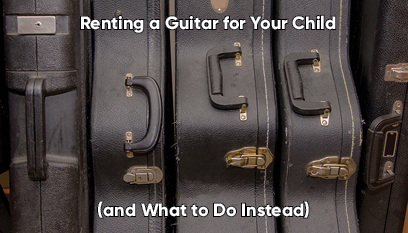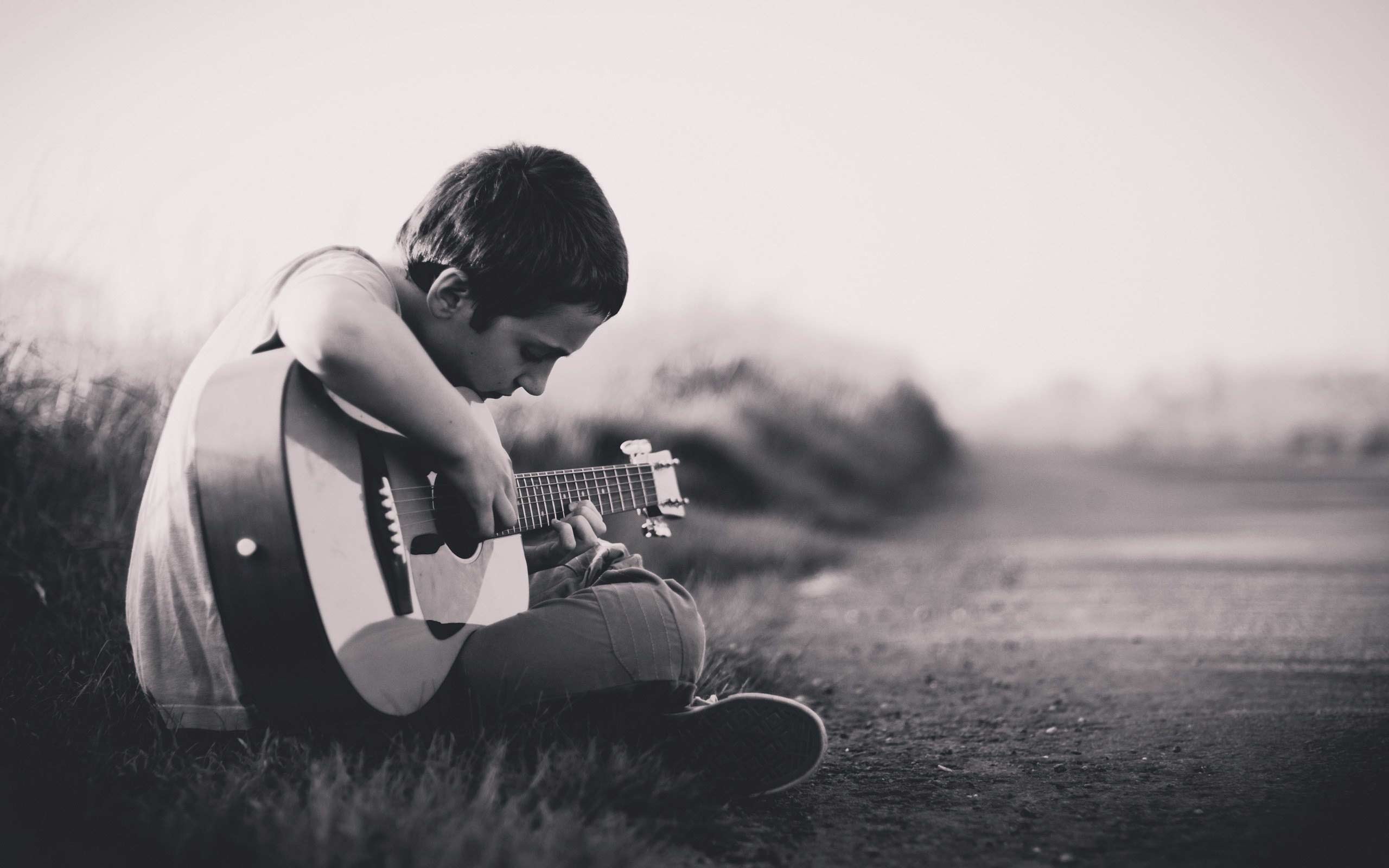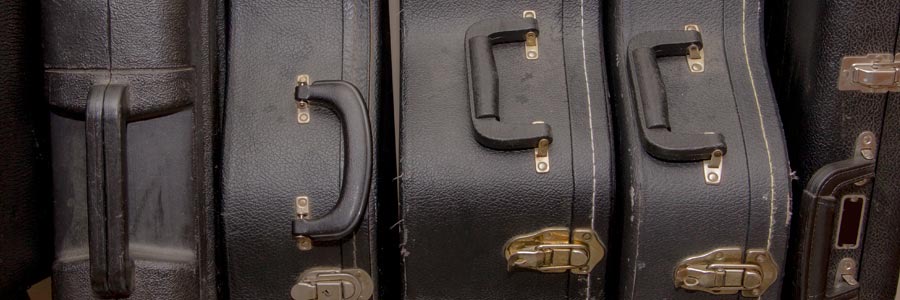 If you know a fourth-grader learning the clarinet, the clarinet is probably a rental. Rental programs are very popular with families whose kids are learning brass and woodwind instruments or participating in the school orchestra. But what if your child wants to learn the guitar?
If you know a fourth-grader learning the clarinet, the clarinet is probably a rental. Rental programs are very popular with families whose kids are learning brass and woodwind instruments or participating in the school orchestra. But what if your child wants to learn the guitar?
It’s possible to rent a guitar for your child’s lessons, but it makes much more sense to buy one. Entry-level guitars are not expensive (especially when compared to tubas!), and you’ll be able to sell the guitar later if your child loses interest or wants to upgrade.
How Instrument Rentals Work
Band and orchestra instruments are not cheap. A brand-new student clarinet will set you back $600 to $1200. That’s a huge investment, especially since the child could decide tomorrow that the clarinet is boring and they’d rather play drums (or soccer!). If families had to pay the full retail price for these instruments up front, far fewer children would be able to participate in music programs.
So people typically rent the clarinet instead. Here’s a common scenario: The rental is around $35 a month, including insurance (and, with children, you’d better get the insurance!). The rental fee covers maintenance and typical repairs, which is meant to give parents peace of mind. There may be an introductory rate that is designed to get the student from the start of school through the first concert. Many programs offer a rent-to-own arrangement in which the student would own the clarinet at the full MSRP after about three years.
You’re Better Off Buying in the Long Run
Obviously, these rental companies would not exist if they weren’t making a profit. When I spoke to a music teacher friend about this, she said that it often makes more sense to buy used instruments. Lots of people have a clarinet in their closet that they only played in middle school, and eventually they get around to selling it. The secondhand market is flooded with great quality used clarinets, so prices are low.
Why buy a new clarinet at full retail price (over the course of years) when you can get a perfectly good used one for $100 to $300? Yes, you will have to pay for any repairs, but you are still ahead of the game. And besides, it’s not a bad thing for your child to learn a little bit about maintaining their instrument.
If your child decides not to stick with the clarinet, you can turn around and sell it for the very same $100 to $300 you paid. What a deal!
Entry-Level Guitar Pricing
So that’s how these rental programs usually work for other instruments. Here’s the problem with the rental model for guitars: An entry-level guitar just isn’t very expensive. In fact, they’re so cheap, the companies that rent instruments to schools usually don’t even offer guitars! You may have to go to a music store to find guitars available for rent.
You can buy a serviceable starter acoustic (such as the Yamaha FG700) for around $200 brand new. Add another $40ish for a proper set-up. Now you’ve spent $240. Renting the guitar (including whatever insurance is offered) might cost $30 a month, so you will break even well before the end of the first year. But as with our clarinet example, you always have the option of selling the guitar when you own it outright.
Alternatively, you can hunt for a great used guitar at a yard sale. How much money you save compared to the rental agreement would obviously depend on what you find and how much you pay, but if you choose wisely, a used guitar can be a very smart investment.
If you and your child don’t know much about guitars, shopping for one can be daunting. Your child’s guitar teacher will know what kind of guitar would meet your kid’s needs and where to find one, so don’t be afraid to consult them for gear advice. They answer these questions all the time, and they’re glad to share what they know. After all, they’d rather not teach your child to play on junk equipment!
Situations In Which Renting Instruments Make Sense
I’m not saying instrument rentals are always a bad investment. Children who play large instruments such the cello learn on small-scale versions, so it’s reasonable to rent those pint-sized instruments while the child is still growing. And of course you may encounter rental arrangements that are set up differently from our clarinet example. I just think it’s important to do the math over the course of several years, and make sure that you are not overpaying in the end.
Renting a guitar does make sense in certain situations, but they are generally outside the setting of a child taking lessons. For example, maybe you decided not to take your guitar on a plane, but you still want to play a bit while you are traveling. Professional musicians on tour rent a lot of gear (especially amps), although they don’t just waltz into Guitar Center — there’s a whole backline industry for that.
Your Child’s First Guitar: Acoustic or Electric?
So now that we’ve established renting a guitar for your child is probably not smart… What kind of guitar should you buy? The acoustic vs. electric debate gets heated, but here are some factors to consider.
Most kids taking guitar lessons play acoustics. Acoustics are simpler, in that you don’t need to buy an amp, cables, etc. to go with them. In some ways learning on an acoustic encourages good technique, because it’s easier to hear mistakes. It’s also physically easier to play nylon strings than steel strings. It’s common for parents to insist that children spend a few years learning to play on an acoustic before getting an electric, to make sure they are really interested.
However, if your child is really excited to play guitar because they want to rock out with overdrive and distortion, they are not going to find learning on an acoustic very inspiring. Going straight to a basic electric guitar is a completely reasonable way to go. There are practical advantages, too. Electric guitars typically have thinner bodies than electric guitars, making them easier for small humans to play (although ¾-scale acoustics for kids are an option as well).
The major manufacturers like Fender typically offer starter kits modeled after their most popular instruments that include an electric guitar, a small amp, a gig bag, and the cables you need. If you’re considering adding pedals, check out these posts: Do Beginners Need Guitar Pedals? and The Best Effects Pedals for Beginners.
If you are a player yourself, this could be a great opportunity to not only get your child following in your footsteps but also bring a different kind of guitar into your orbit. For example, if you’re a humbucker player then go for a Fender Strat or Tele package and see what the single-coil sound is all about. Already a Fender fan? Try an Epiphone. Just don’t forget to let your kid play their guitar!
Protecting Your Investment
Once your student is outfitted with their starter pack, it’s time to begin the first lesson of gear: how to treat it with respect. I’ll admit that my friends and I were obsessed with The Who when we were kids and we put our gear through quite a bit of abuse — but we only did that with gear that was expendable.
Your student should be taught how to properly coil their cables to prevent shorts or other preventable damage. They should also learn how to clean and polish the guitar during routine string changes to extend the life of the guitar and protect its value. A great time to learn this lesson is when you pick the guitar up from the luthier after it gets its first set-up.
Routine maintenance and proper handling are key when it comes to protecting the value of the instrument. This is important to do if it’s unclear whether the lessons will take, since you may end up selling the gear to fund the next adventure.
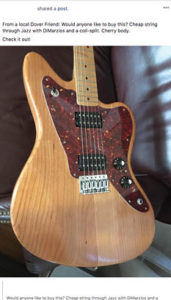 How to Sell a Guitar
How to Sell a Guitar
These days, selling an instrument (or some other piece of music gear) is much easier than putting up flyers at the record shop and hoping the phone rings. Sites like Reverb, Craigslist, and even Facebook are great places to sell (and buy!) gear. But don’t click yet — you’ve got a few things to do first.
- If the guitar hasn’t been recently set up by a professional, bring it in. A set-up guitar will play better than one that’s been neglected in a closet for a year. Plus, you can use the investment in the set-up as a reason to ask top (reasonable) dollar for your gear. Be sure to keep the receipt for the set-up in the guitar case so you have documentation of the work that was done.
- Write up a description of the guitar with all of the relevant information.
- When you bought it
- How often it was played
- How often it was set-up
- Why you are selling it
- Any issues with the instrument, such as blemishes in the finish. Surprising people with undisclosed damage is a great way to ensure that the sale falls through.
- What else is included in the sale (amp, case, strap, extra strings, etc.)
- Take several photos of the guitar. Again, this is much easier these days with the proliferation of smartphones. If the service you’re using allows you to upload multiple photos of the guitar, you should be sure to include all of the following shots:
- A shot of the entire guitar, preferably in a stand or leaning up against a wall.
- A close-up shot of the action of the strings around the 12th fret.
- A shot of the back of the guitar.
- A shot showing any blemishes or issues with the instrument
- A shot that includes everything that is coming with the instrument
- A shot detailing each individual piece of equipment that is coming with the instrument.
- Be clear in your listing about what kinds of payment you accept (cash, check, PayPal, Venmo, Bitcoin, etc.).
- Suggest some places you’re willing to meet to test the equipment and make the exchange. I live in a small city in New England where I feel very comfortable having people come test guitars in my garage, but that’s not the case for everyone. You may prefer to meet in a public place like a church, a school, or your place of employment.
If that sounds like too much work, there are quicker ways to unload an instrument — but you are likely to recoup less of your initial investment. One option is to see if a local music store is willing to buy it or let you consign it at their shop.
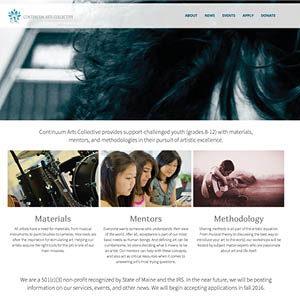 If you’re already willing to take less than it may be worth, I would strongly encourage you do donate the instrument to a nonprofit group who could make use of it. I’ve personally donated unused instruments and amps in the past and it feels great. My favorite local group to support is the Continuum Arts Collective, whose mission is “to provide support challenged youth in grades 8-12 with materials, mentors, and methodologies in their pursuit of artistic excellence.” This organization literally hands aspiring young artists tools they need but cannot afford — a guitar, a camera, whatever — along with lessons and mentoring. It’s awesome.
If you’re already willing to take less than it may be worth, I would strongly encourage you do donate the instrument to a nonprofit group who could make use of it. I’ve personally donated unused instruments and amps in the past and it feels great. My favorite local group to support is the Continuum Arts Collective, whose mission is “to provide support challenged youth in grades 8-12 with materials, mentors, and methodologies in their pursuit of artistic excellence.” This organization literally hands aspiring young artists tools they need but cannot afford — a guitar, a camera, whatever — along with lessons and mentoring. It’s awesome.
To Keep or Not to Keep When Upgrading
I hope your child loves learning the guitar and eventually wants to upgrade to a higher-quality instrument (or maybe switch to electric, if they started on acoustic). That’s really the best-case scenario. At this point, you may need to sell the starter equipment to finance the new purchase.
If it is financially feasible, I would encourage you to keep the starter equipment around. It will be handy for your child to have a back-up instrument for when the new one is in the shop, and when your child has friends over to jam.
Most players are sentimental about their first guitar. I still have the first guitar that I purchased with my own money, even though I don’t play it very much. I also have my Dad’s classic 70’s Ovation Balladeer that I learned on and he used to gig with. While other guitars may come and go, both of these guitars are part of my collection that will never be sold.

